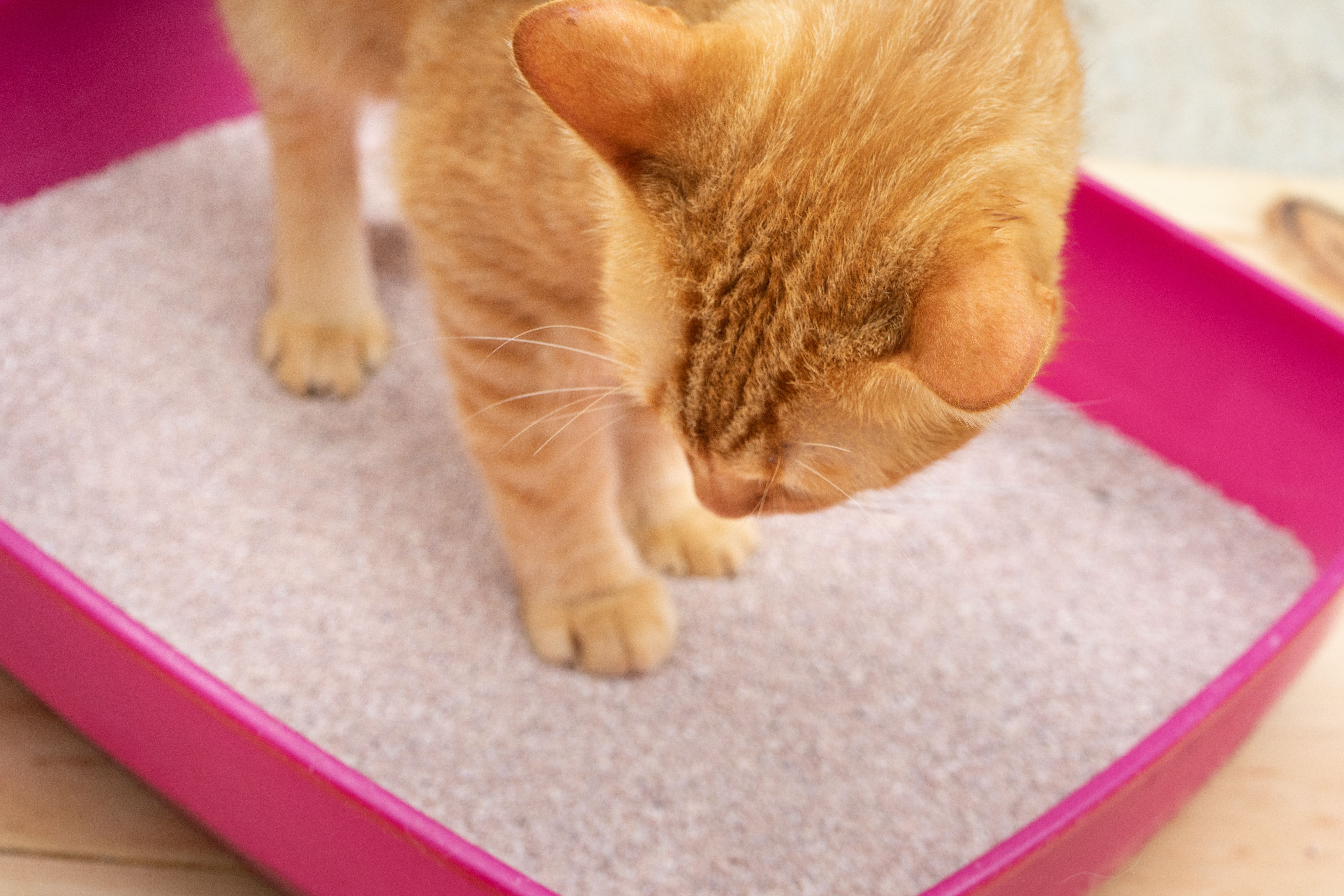Feline idiopathic cystitis: What it is and how to diagnose in patients
Internal medicine expert discusses this common feline condition at the New York Vet Show in New York, New York
Feline idiopathic cystitis (FIC) is the most common diagnosis in cats less than 10 years of age with lower urinary tract disease, according to the American Veterinary Medical Association.1 FIC and other lower urinary tract signs (LUTS)—including dysuria, stranguria, hematuria, pollakiuria, and periuria—are responsible for one of the most common reasons cats are surrendered to shelters and rescues or even euthanized.2,3
Because of its prevalence and burden on owners, recognizing and diagnosing FIC can help decrease the stress of the condition later on. “It's a major headache for us because we have frustrated clients who live in a house that smells like cat pee. But they love their pet, and they don't want to surrender it. Unfortunately, many of them feel like they get to that point. And by the time they come to us, a lot of times they're kind of at their wits end. [Potentially] their partner or other family members have been pressuring them about the cat, it's very difficult for these people,” said Julie Byron, DVM, MS, DACVIM, professor of small animal internal medicine at The Ohio State University, in her session at the New York Vet Show in New York, New York.3
Guajillo studio / stock.adobe.com

What it is
Some of the most common causes of LUTS include idiopathic cystitis.4 FIC is usually diagnosed after ruling out all other diseases.1,4 Byron explained to attendees that, historically, FIC was thought to be caused by bacteria, then by a virus, then by stones or crystals, however she stated that FIC is not caused by any of these. What FIC is, on the other hand, is a neurogenic inflammation and pain syndrome, a dysregulation of the stress response system, and an organ-specific manifestation of a systemic disorder.3 This concludes that stress can be a major factor in the development of FIC. Possible sources of stress in a cat’s life may include environmental changes, changes in food schedule, and changes in the number of animals in the household.4 However, it is important to remember FIC is still unknown, therefore future research may reveal new developments and information.
“How does the central threat response get altered in [cats with FIC]? How can 1 cat in a household of 5 [cats] have this problem but everybody else seems to be doing fine? So, there may be a genetic predisposition. Of course, dealing with genetic predisposition in cats is nearly impossible, because there's [often] a handful breeds,” Byron said. “We also think there is possibly a significant epigenetic factor… So, a time when the nervous system is developing when the threat response system is developing. And these things occur late in gestation, or just after birth…It's trauma, it's things that can actually alter the way the animal body responds.”
Diagnosing FIC
Diagnosing FIC usually comes after ruling out all other potential diseases. There are no diagnostic tests specifically for FIC, however analyzing urine samples, abdominal x-rays, and possibly ultrasounds could help rule out these other diseases.1,5 In one example of ruling out other diseases, Byron said, “Less than 2% of cats with lower urinary tract signs have UTIs [urinary tract infections]. There are some, but not very many. However, in older cats, [it’s] much higher so in that 8-, 9-, 10-year-old cat, it needs to absolutely be on your list [of potential diagnoses]. Especially if they have other health problems.”
Once other bacterial infections, urolithiasis, or other diseases are ruled out and FIC could be the patient’s diagnosis, Byron stated that there are 4 types of the condition that can present:
- Acute, self-limiting is the most common, occurring in 80-95% of cases and can happen about once or twice in a cat’s life.
- Frequently recurrent occurs about 2-15% of cases. These cases usually have reoccurring LUTS.
- Persistent is similar to frequently recurrent, also occurring at 2-15% of cases and they experience chronic LUTS.
- Urethral obstruction in males is unique to this sex of cat, but they can also have the other 3 presentations. This type usually occurs in 15-25% of male cases.
Overall, Byron stated that cases of FIC tend to come from patients who are indoor-only cats, obese, and/or live in a multi-cat household. She also mentioned that they can present any LUTS, but sometimes periuria may be the only clinical sign.
Because this disease is thought to be caused by a stress response, changing the cat’s environment, and trying to reduce stress or stress triggers can help prevent FIC.1,3,5 “For client education and support: [Remember] these clients feel awful, they're upset, they live in a house that smells like pee, they don't want to have people over, their cat is obviously painful, and they feel like a really terrible pet parent,” Byron said. “Explain to them what it is: It is a medical condition. It's not because their cat hates them. What can help? Stress reduction, changing environment, things that may actually be fun for the owner like playing with their cat.” Byron suggested sharing stress evaluation resources with clients to determine if an environment change at home is needed.
References
- Feline lower urinary tract disease. American Veterinary Medical Association. November 28, 2023. https://www.avma.org/resources/pet-owners/petcare/feline-lower-urinary-tract-disease
- Patronek GJ, Glickman LT, Beck AM, McCabe GP, Ecker C. Risk factors for relinquishment of cats to an animal shelter. J Am Vet Med Assoc. 1996;209(3):582-588.
- Byron, J. Clinical Approach: Cat with Recurrent Cystitis. Presented at New York Vet Show; New York, New York; November 8-9, 2023.
- Feline Lower Urinary Tract Disease. Cornell Feline Health Center. October 2016. Accessed November 28, 2023. https://www.vet.cornell.edu/departments-centers-and-institutes/cornell-feline-health-center/health-information/feline-health-topics/feline-lower-urinary-tract-disease
- Young A. Feline idiopathic cystitis. UC Davis School of Veterinary Medicine. March 17, 2021. Accessed November 28, 2023. https://healthtopics.vetmed.ucdavis.edu/health-topics/feline-idiopathic-cystitis